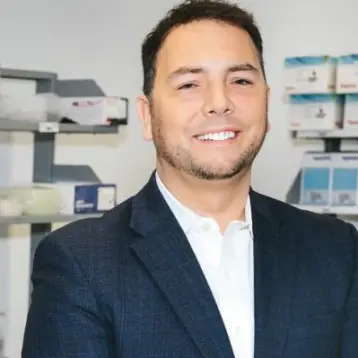|
Diagnosing cancer on an early stage is extremely important for improving patients’ survival rates. Current diagnostic tests are often weak in diagnosing cancer at its early stages and at the same time expose patients to radiation (making many patients pass onthe test altogether). However, now a group of researchers from the University of Oklahoma, led by Dr. Patrick McCann, is working on creating a sensor that will detect biomarker gases present in the breath of a person with cancer.
This research was inspired by studies presenting interesting results: dogs were able to detect cancer by sniffing the breath of cancer patients. By smelling breath samples, dogs identified breast and lung cancer patients with accuracies of 88 and 97%, respectively. It is obvious that some gas in the lungs is associated with cancer.
The idea of using breath analysis to detect cancer intrigued McCann. He thought it would be possible to use mid-infrared laser technology that may help understand the relationship between specific gas biomarker molecules and cancer. It is his belief that it is possible to develop detection devices for cancer, in particular for hard-to-detect cancers like lung cancer. He believes that such a device would revolutionize the medical world.
Even though studies confirm that dogs can detect cancer by smelling the gases, they can’t tell us which gases they smell. So McCann’s team is working on figuring that out. They have developed laser-based methods to detect molecules. Mid-infrared lasers can measure suspected cancer biomarkers – ethane, formaldehyde, and acetaldehyde (which are all organic compounds). McCann intends to use nanotechnology to improve the laser performance and shrink the laser system, which would allow battery-powered operation of a handheld sensor device.
Although McCann believes it technologically possible to create the new device right now, he estimates that it will take between 5-10 years to manufacture a low cost version which could be used around the world.
TFOT has recently covered a story of a bra designed to detect cancer by monitoring changes in the infrared radiation range of the tissue. Another story covered by TFOT is the use of laser to improve skin cancer treatment, developed by Scientists at Queen’s University in Belfast.











